Crash Testing – the Ultimate Test of Master Engineer’s Skills (Vol. 2)
A vehicle crash test lasts a mere 0.1 second. But nearly 7 days of in-depth meetings and preparation, including test specifications review, crash-test dummy selection, vehicle preparation, measurement instrument set-up and check, are spent for that 0.1 second.
On the test day, a crash-test dummy (see Volume 1 for more on master engineers and their crash-test dummies) is finally mounted on the test vehicle. Mounting a crash-test dummy takes much more than simply putting it on the driver’s seat. A crash test, where a huge force is generated in a second, is subject to legal standards which are specified and controlled in millimeters, so setting the dummy exactly to the standard’s specifications takes much experience and skills.
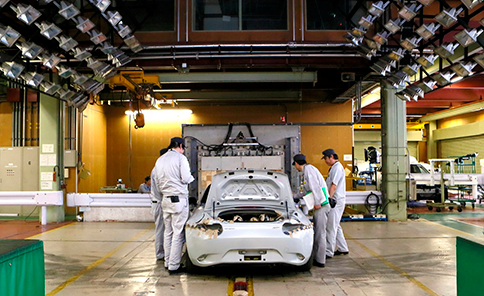
(The dummy is mounted on the test vehicle in a climate-controlled environment.)

“The best of the best” in “dummy set”, or crash-test dummy setting, is Kazuhiko Takeguchi (pictured above), an employee with Mazda E&T. Takeguchi says, “I see invisible grids in a test car” which speaks volume of his master engineer status.
A crash-test dummy designed as a male adult weighs around 75 kilograms, so getting the dummy seated on a car seat takes a huge effort without experience and expertise. In a normal car with a roof on, a dummy is suspended from above at an angle and carried in a swinging motion before it is seated. Then a 3-D co-ordinate measuring machine (a machine used to measure a specified space inside a car by using vehicle’s dimension) is used to take measurements for determining positions of different parts of the dummy.
Measurement is taken at as much as 10 parts of a dummy, such as toe’s position and knee and lower back angles. Keeping in mind subtle impact generated by lowering of seat surface caused by the weight of the dummy and a thickness of a shirt worn by a dummy per legal regulation, error must be contained within a few millimeters in a dummy setting process.
As consumers are increasingly aware of the importance of vehicle safety, crash test modes as well as crash-test dummies are becoming increasingly complex, with increased testing frequency. A master engineer like Takeguchi tackles the challenges head on; those master engineers are willing to work in the background to support Mazda’s vehicle safety. Without them, the Mazda brand would not have earned a reputation for being safe, secure and reliable.


“Each person’s technical expertise and being able to work as a team are qualities that are essential to successful crash testing. Each test relies on meticulous work with attention to every single detail. And all the team members must work closely together without making any mistakes, because compromising our quality standards is the last thing we want”.
Those are the words of Tatsuhiko Iwamoto, a member of Mazda’s Crash Safety Development Department who supervises vehicle crash testing. Iwamoto’s words sum up what is most important in ensuring success of crash testing – all the master engineers with different expertise unleash their outstanding skills in a mere 0.1 second. And it is those master engineers who are making a solid contribution to Mazda’s ongoing improvement of crash safety performance.
Other Stories
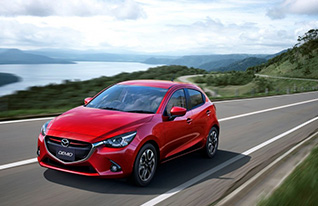
Driving stories on the great & challenging roads and journeys
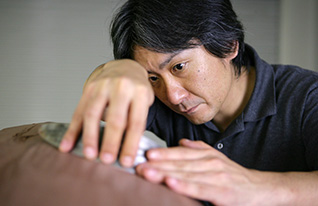
Stories about the craftsmanship and design evolution of Mazda
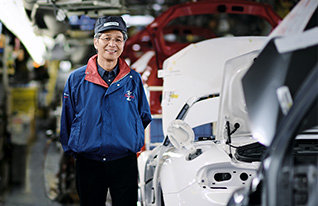
Visions and philosophies of Mazda engineers
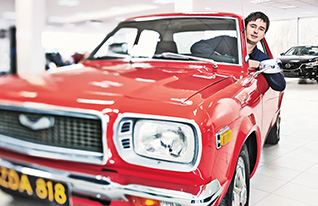
The spirit of Mazda owners, collectors, clubs and aficionados around the world
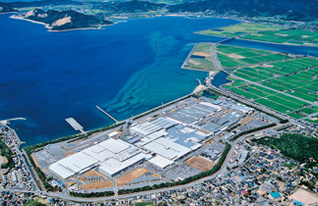
Mazda brand heritage and history

